2-(9-Oxoacridin-10(9H)-yl)acetic acid

2-(9-Oxoacridin-10(9H)-yl)acetic acid structure
|
Common Name | 2-(9-Oxoacridin-10(9H)-yl)acetic acid | ||
|---|---|---|---|---|
| CAS Number | 38609-97-1 | Molecular Weight | 253.253 | |
| Density | 1.4±0.1 g/cm3 | Boiling Point | 486.6±34.0 °C at 760 mmHg | |
| Molecular Formula | C15H11NO3 | Melting Point | -289ºC (dec.) | |
| MSDS | Chinese USA | Flash Point | 248.1±25.7 °C | |
| Symbol |

GHS07 |
Signal Word | Warning | |
Use of 2-(9-Oxoacridin-10(9H)-yl)acetic acidCridanimod is a small-molecule immunomodulator and interferon inducer[1]. Cridanimod is a potent progesterone receptor (PR) activator mediated through induction of IFNα and IFNβ expression[2]. |
| Name | 9-Oxo-10(9H)-acridineacetic acid |
|---|---|
| Synonym | More Synonyms |
| Description | Cridanimod is a small-molecule immunomodulator and interferon inducer[1]. Cridanimod is a potent progesterone receptor (PR) activator mediated through induction of IFNα and IFNβ expression[2]. |
|---|---|
| Related Catalog | |
| Target |
PR, IFNα, IFNβ[1] |
| In Vivo | Cridanimod (IM; 1-6 mg; twice a week) has a significantly longer survival time. Cridanimod significant increases in IFNα and -β in cridanimod-treated mice in a dose-dependent manner[1]. Animal Model: Athymic mice with hec50co cells[1] Dosage: 1, 3, 6 mg Administration: IM; twice a week Result: Had a significantly longer survival time. |
| References |
| Density | 1.4±0.1 g/cm3 |
|---|---|
| Boiling Point | 486.6±34.0 °C at 760 mmHg |
| Melting Point | -289ºC (dec.) |
| Molecular Formula | C15H11NO3 |
| Molecular Weight | 253.253 |
| Flash Point | 248.1±25.7 °C |
| Exact Mass | 253.073898 |
| PSA | 59.30000 |
| LogP | 2.03 |
| Vapour Pressure | 0.0±1.3 mmHg at 25°C |
| Index of Refraction | 1.657 |
CHEMICAL IDENTIFICATION
HEALTH HAZARD DATAACUTE TOXICITY DATA
|
| Symbol |

GHS07 |
|---|---|
| Signal Word | Warning |
| Hazard Statements | H315-H319-H335 |
| Precautionary Statements | P261-P305 + P351 + P338 |
| Personal Protective Equipment | dust mask type N95 (US);Eyeshields;Gloves |
| Hazard Codes | Xi: Irritant; |
| Risk Phrases | R36/37/38 |
| Safety Phrases | 26 |
| RIDADR | NONH for all modes of transport |
| WGK Germany | 3 |
| RTECS | AR7190000 |
| HS Code | 2933990090 |
| Precursor 9 | |
|---|---|
| DownStream 0 | |
| HS Code | 2933990090 |
|---|---|
| Summary | 2933990090. heterocyclic compounds with nitrogen hetero-atom(s) only. VAT:17.0%. Tax rebate rate:13.0%. . MFN tariff:6.5%. General tariff:20.0% |
|
[The interferon production by rat spleen and thymus lymphocytes in condititons of hypoacidity].
Fiziol. Zh. 59(1) , 84-8, (2013) The interferon production by rat spleen and thymus lymphocytes in conditions of gastric juice hypoacidity, evoked by 28 days of omeprazole treatment, was studied. It was shown that the spontaneous and... |
|
|
[Experimental justification of approaches to pharmacological correction of delayed disorders caused by acute ethylene glycol poisoning].
Eksp. Klin. Farmakol. 75(11) , 31-4, (2012) The development of delayed disorders caused by acute ethylene glycol poisoning has been studied in experiments on male rats. These disorders include chronic renal failure and secondary combined immuno... |
|
|
Species-specific detection of the antiviral small-molecule compound CMA by STING.
EMBO J. 32(10) , 1440-50, (2013) Extensive research on antiviral small molecules starting in the early 1970s has led to the identification of 10-carboxymethyl-9-acridanone (CMA) as a potent type I interferon (IFN) inducer. Up to date... |
| cridanimod |
| (9,10-Dihydro-9-oxo-10-acridinyl)acetic acid |
| MFCD00157050 |
| (9-Oxo-10(9H)-acridinyl)acetic acid |
| 9-Oxo-10(9H)-acridineacetic acid |
| (9-oxoacridin-10(9H)-yl)acetic acid |
| 10-(Carboxymethyl)-9(10H)-acridone |
| 2-(9-oxoacridin-10-yl)acetic acid |
| 10(9H)-Acridineacetic acid, 9-oxo- |
| 9-Oxoacridine-10-acetic Acid |
| 10-(Carboxymethyl)-9(10H)acridone |
| (9,10-Dihydro-9-oxo-10-acridinyl)acetic acid (10-(Carboxymethyl)-9(10H)acridone |
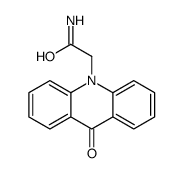 CAS#:77778-90-6
CAS#:77778-90-6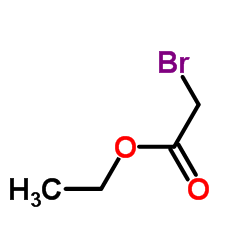 CAS#:105-36-2
CAS#:105-36-2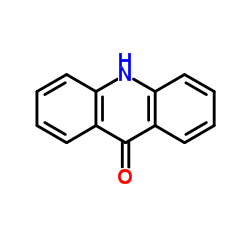 CAS#:578-95-0
CAS#:578-95-0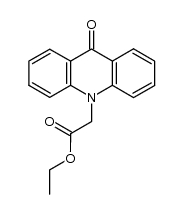 CAS#:38609-90-4
CAS#:38609-90-4![2-[N-(cyanomethyl)anilino]benzoic acid Structure](https://image.chemsrc.com/caspic/268/77778-87-1.png) CAS#:77778-87-1
CAS#:77778-87-1 CAS#:77778-88-2
CAS#:77778-88-2![2-[N-(carboxymethyl)anilino]benzoic acid Structure](https://image.chemsrc.com/caspic/088/85793-68-6.png) CAS#:85793-68-6
CAS#:85793-68-6 CAS#:91-40-7
CAS#:91-40-7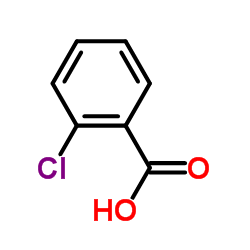 CAS#:118-91-2
CAS#:118-91-2
